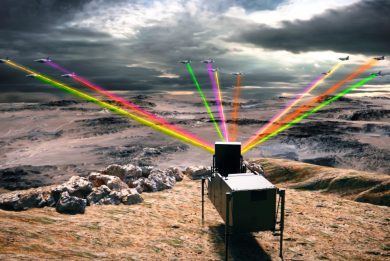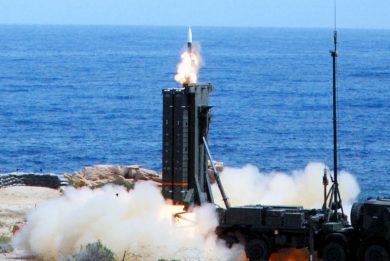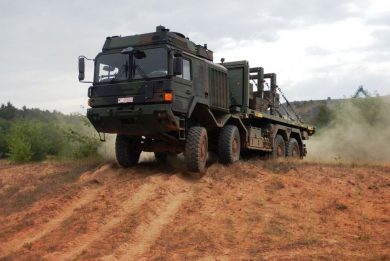Eurosatory 2024 – TDW details its PARM NextGen antitank mine
At Eurosatory 2024 TDW, the MBDA company specialised in the design and manufacture of warheads and warhead systems, detailed its PARM NextGen antitank mine, which existence was unveiled in late 2023 during a visit to the company facility in Schrobenhausen, some 75 km north-west of Munich
TDW has currently started producing thousands of original PARMs, the acronym for PanzerAbwehrRichtMinen, or antitank directional mine, partly to replenish the Bundeswehr inventory, Germany having provided its mines to Ukraine, and partly to be directly delivered to Ukraine. The company is currently working five days a week on one shift, the rate of production remaining classified.
After 10 years without producing the PARM, the current mine has undergone minor changing to cope with obsolescence, but remains the same system developed by then Messerschmitt-Bölkow-Blohm (MBB) in the early 1980s.
During the visit to Schrobenhausen in November 2023, EDR On-Line learned that a modernised version of the PARM was under development, the main difference being the triggering sensor. In Paris more details were provided. First of all the name, the new version being called PARM NextGen.
“We are integrating a new sensor in place of the original trigger wire, the new item being provided by a third party; it gives us a better capability to discriminate targets, and also increases the weapon range, as it allows to determine the trigger point when to fire, something the original optical cable could not do. This sensed a tank running above it and triggered the warhead, but could not distinguish how far the tank was, while the new sensor can feel this and trigger the weapon at the best point in time,” Andreas Seitz, Managing Director TDW explains. “The second feature that we implemented is a radio remote control; it allows us to arm and make safe the PARM NextGen as many times as we want,” he added. This gives the system maximum flexibility, as it allows to deploy a smart minefield ahead of defensive positions, which remains safe until the last friendly vehicles have not withdrawn, then being activated to stop enemy advancing units. It can also trap a column along a road, activating at different times mines hitting front and rear vehicles.
The remote control comes in the form factor of a personal role radio, fitted with a short antenna; it is very simple and has three main pushbuttons, safe, arm and fire, the latter to override the automatic firing function of the sensor. It can operate “several hundred meters” from the mine, no more precise data being provided. Each radio control can activate a maximum of three mines; to become operative the mine safety pin must be inserted in one of the three slots available on the control. The remote control is usually silent, and transmits only for very short periods of time, which together with the low output power minimises the risk of being detected and then jammed. The PARM NextGen control is based on an open system architecture, which means that the mine can be integrated into any current or future tactical effector management system, allowing for example to manage smart minefields made of several dozen mines.
The PARM NextGen has an effective range of 60 metres, it has an autonomy of 30 days, and retains the 128 mm diameter single shaped charge warhead of the original PARM. “We are having very good feedback from Ukraine,” Andreas Seitz stated, explaining that “we did a lot of analysis and we found that this was the most cost-effective solution,” cost and ease of production being key parameters. Moreover the PARM, in its two different variants, is deployed very low above the ground, therefore it hits the lower part of the tank, which is usually not the most protected one.
Compared to the original mine the PARM NextGen has 30 days of autonomy rather than 40, due to the fact that the new sensors package consumes more energy compared to the previous one. “We use vibration and acoustic sensors, which are less power hungry, as wake up systems for the infrared sensor,” Mr. Seitz explains, adding that the weapon might reach the 45 days limit imposed by international regulations, however in that case the battery could not be fully integrated in the rear module that contains all the electronics. “Once the time limit is reached the PARM NextGen is made completely safe, and I mean not unarmed but completely safe,” the company MD underlines.
TDW did its best to limit as much as possible the changing in order to keep cost under control and to facilitate manufacturing, by maintaining as many components as possible common to both versions. EDR On-Line understood that the main module which is different is the one at the rear of the weapon. The new system will require some qualification work, which should take a relatively short time as many of the components are already qualified. Many elements were already part of the company portfolio, such as the safe and arm device that is considered at TRL 8/9.
Coming to production capacity, TWD considers it can multiply by two or three the current rate. “We still have two days in the week and can move from one to two or even three shifts,” Andreas Seitz underlines, adding that add-on personnel might be hired, training to be done by experimented workers, the main issue being to make them safety and quality minded, safety being a key element when dealing with energetic materiel.
First deliveries of the PARM NextGen are scheduled for late 2026, which is consistent with the delivery of the newly manufactured PARM.
Photos by P. Valpolini







